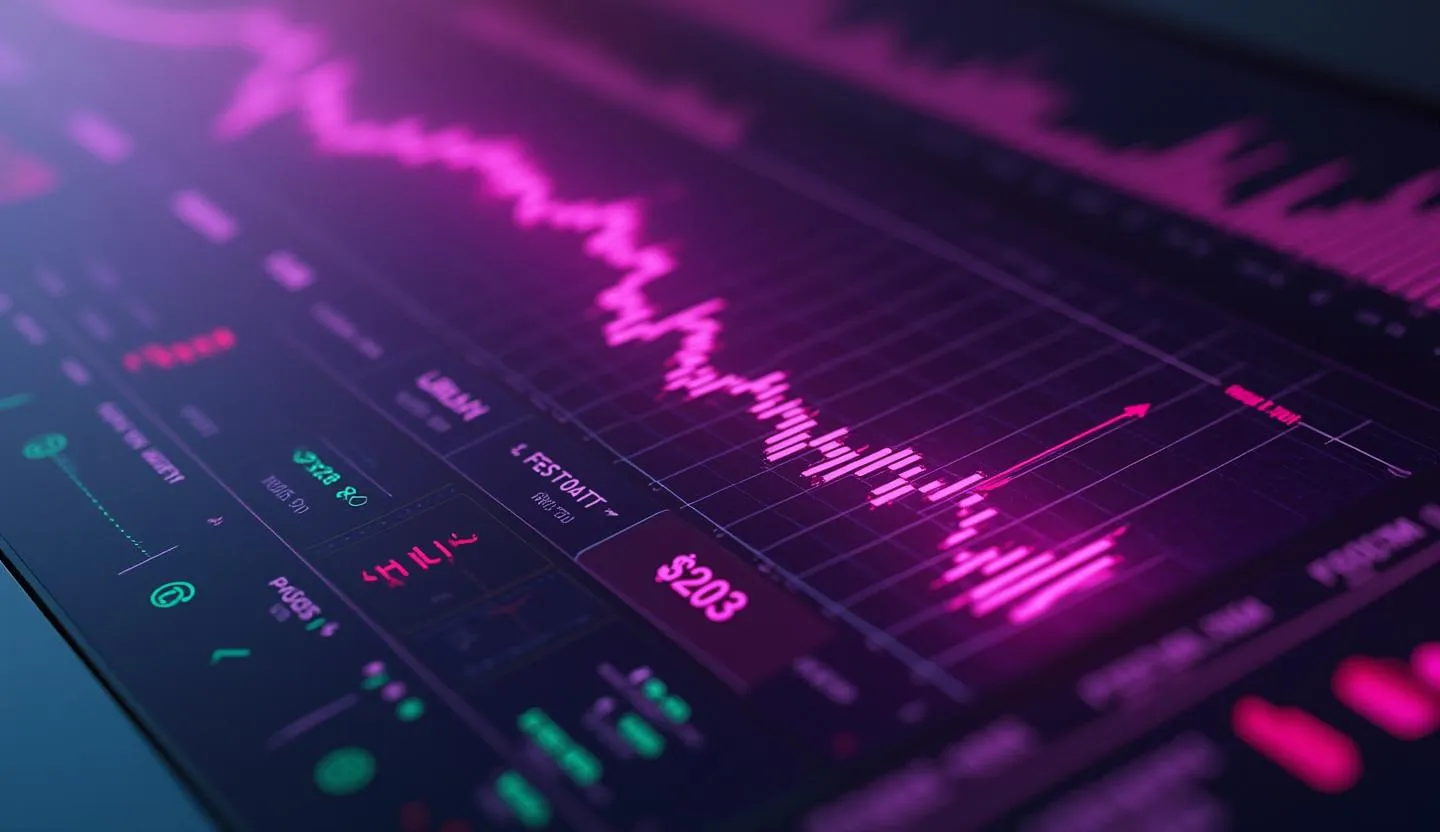BofA Securities shifts Equifax to Neutral despite AI-driven growth—what does this signal for investors as valuation tightens and sector headwinds emerge?
Equifax (EFX), a global data analytics and credit reporting leader, stands at a crossroads after BofA Securities downgraded the stock from Buy to Neutral. Known for providing consumer and business credit data, fraud prevention, and advanced analytics, Equifax has built a formidable presence in the financial services ecosystem, serving banks, governments, and enterprises worldwide. Recent advances in artificial intelligence, cloud-based platforms, and new product launches have driven optimism. However, with the stock trading near recent highs and margin concerns mounting, BofA’s move signals a shift in risk-reward calculus that all investors should dissect deeply. Analyst upgrades and downgrades from major players like BofA often act as market catalysts, reshaping sentiment and capital flows—making today’s rating change a pivotal event.
Key Takeaways:
Potential Upside Return: The new BofA price target of $285 implies a potential upside of approximately 13% from the current price of $251.72, despite the downgrade to Neutral.
Stock Price Reaction: Shares are down 4% in early trading, reflecting immediate market concern and possible profit-taking after a strong year-to-date run.
Recent News Drivers: Major news includes Equifax’s expansion in AI and machine learning (35 new patents secured), new social service income verification offerings, and ongoing margin headwinds from rising costs—all relevant to both the downgrade and investment case.
Technical and Sentiment Check: The stock’s RSI has dipped below 40, suggesting short-term oversold conditions, while average daily volume remains robust, pointing to sustained institutional interest.
Understanding the Downgrade: Analyst and Firm Context
BofA’s Role and Influence in the Analyst Community
Bank of America Securities is one of the world’s largest and most influential investment banks, with deep sector expertise in financial services and technology. Its analyst team is well-regarded for rigorous financial modeling, macro analysis, and access to both management and industry trend data. A rating change from BofA carries significant weight, often prompting portfolio allocation shifts among institutional investors and setting the tone for peers. The move from Buy to Neutral, especially with a price target that still sits meaningfully above the current share price, signals a nuanced view: BofA acknowledges Equifax’s innovation and secular tailwinds but is increasingly wary about valuation and execution risk in a changing macro environment. This alignment with both the company’s operational strengths and its emerging risks demonstrates the firm’s balanced approach—a message that should not be ignored by investors seeking asymmetric opportunities.
Stock and Financial Performance: Navigating Growth and Margin Pressures
Equifax’s business model is built on two pillars: a massive, proprietary data ecosystem and a technology stack that powers credit risk, employment verification, and identity management solutions. Over the past year, Equifax’s stock price has moved between a low of $199.98 and a high of $309.63, with a recent closing price of $255.70 and current early trading at $251.72. The sentiment ratio (up days vs. down days) sits near 0.51—almost perfectly balanced—underscoring a market grappling with both bullish innovation narratives and bearish margin concerns.
Recent Financials and Operations
While Equifax has delivered steady top-line growth via expanded B2B cloud offerings and new product launches, rising costs—particularly in R&D and technology infrastructure—have pressured margins. According to Zacks Investment Research, “EFX expands its tech edge with new AI tools, patent wins and B2B cloud growth. Yet, rising costs threaten margins.” This duality is reflected in the downgrade, as BofA recognizes the company’s execution but questions the near-term ability to translate innovation into profit expansion.
Technical Indicators and Sentiment Analysis
Technically, Equifax trades just above its lower Bollinger Band ($251.68), with a recent RSI of 38.8—often considered the threshold for oversold territory. This suggests a potential for a technical bounce, although persistent margin worries could limit upside until fundamentals improve. Average daily volatility (6.5 points) and volume (98,000+) imply that institutional activity remains high, bringing both opportunity and risk for nimble investors.
Potential Upside and Valuation: The Ceiling Tightens
Despite the downgrade, BofA’s $285 target represents a 13% upside from current levels. However, the shift from Buy to Neutral suggests that most of the near-term gains may already be priced in, barring a positive surprise in margin recovery or further acceleration in high-margin AI-driven offerings. Investors must weigh the risk of further multiple compression—especially if cost inflation persists—against the long-term secular growth thesis.
Recent News: AI Innovation, Patents, and Product Expansion
Strategic Moves in AI and Data Analytics
In the past month, Equifax has announced:
35 new patents in AI, machine learning, fraud, and identity solutions, bringing its portfolio to nearly 650 patents across 15 countries. This cements Equifax’s position as a technology innovator, but the financial payoff remains to be seen.
Complete Income™ for Social Services: A new cloud-based solution aimed at streamlining government benefit verification, a potential growth lever in the public sector.
Continued Margin Pressure: Industry commentary points to rising costs as a key concern—an issue directly cited in BofA’s downgrade logic.
“EFX expands its tech edge with new AI tools, patent wins and B2B cloud growth. Yet, rising costs threaten margins.”
— Zacks Investment Research
Sector View: Credit Bureaus, Data, and the AI Race
Equifax operates at the intersection of financial services, technology, and regulatory scrutiny. The credit bureau sector is experiencing rapid transformation as AI, alternative data, and cloud platforms reshape risk management and compliance. While these trends offer long-term tailwinds, they also demand heavy investment, increasing execution risk and compressing near-term profitability. As competition intensifies—from both traditional peers and fintech disruptors—valuation discipline becomes paramount.
The Bottom Line: What Should Investors Watch Next?
Margin Inflection Point: Watch for evidence of margin stabilization or improvement in coming quarters. This will be the key catalyst for a potential rating re-upgrade or further downside.
AI Monetization: Progress in translating patent wins and new AI products into tangible revenue and profit growth will determine whether Equifax can break out of its current valuation range.
Technical Support: The $250 level is a critical technical and psychological support. Further weakness below this level could trigger accelerated selling by quant-driven funds.
Sector Rotation: With credit bureau stocks trading at a premium, any broader rotation out of growth/tech or financials could create further headwinds—despite Equifax’s innovation edge.
Conclusion: Navigating the Crossroads
BofA’s downgrade of Equifax is a classic example of a sophisticated, data-driven recalibration. While the long-term AI and analytics thesis remains intact, margin headwinds and a full valuation cap near-term upside. For investors, the message is clear: monitor execution, stay alert for margin inflection, and be ready to act if technical or fundamental conditions change. The next chapter for Equifax will be written at the intersection of innovation and discipline—a space where true alpha can be found, but only for those who see beyond the headlines.

.svg)
.svg)
.svg)
.svg)

.svg)

.svg)
















